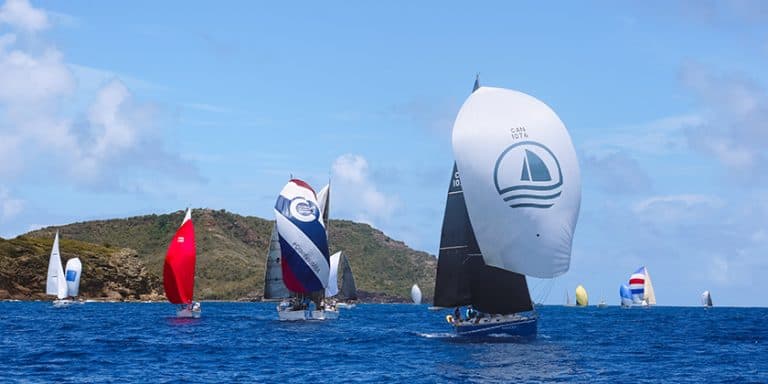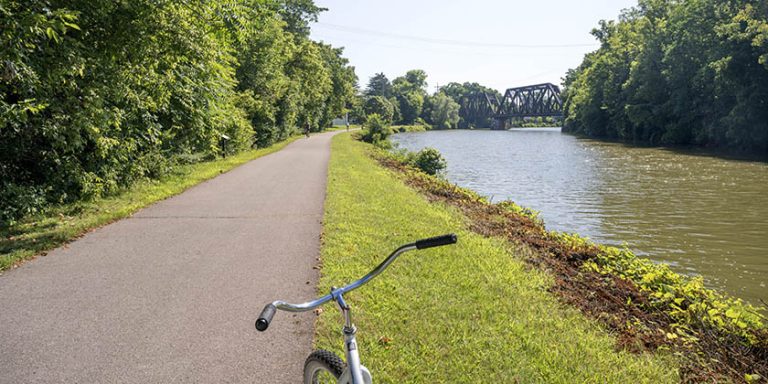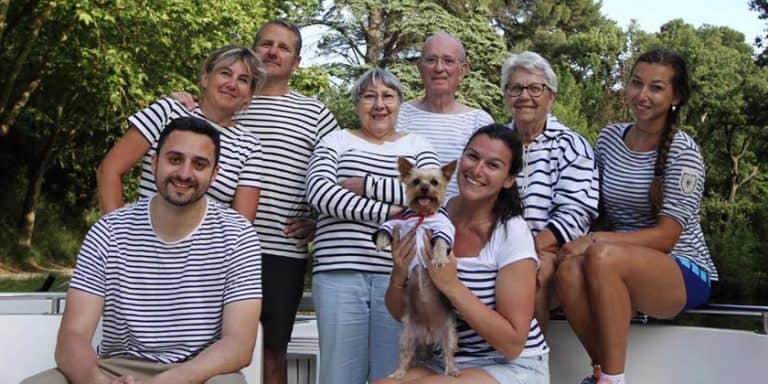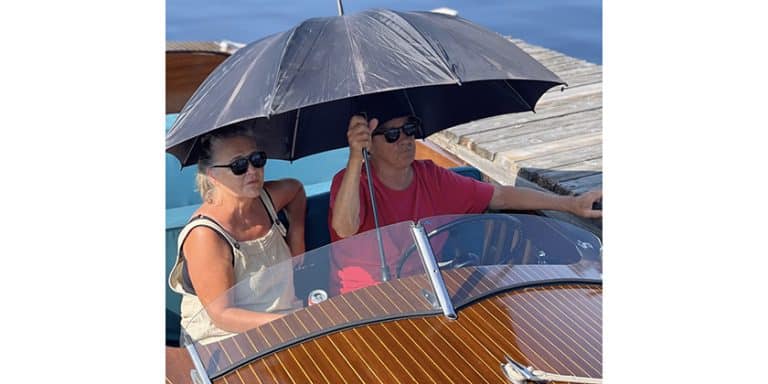Transatlantic Crossing – From England to Antigua

 It had been a fast 2-day passage south from the Portuguese island of Madeira to the sun-baked Canary Islands of Spain, our jumping-off point for a transatlantic passage to the Caribbean. We’d had great sailing with wind all the way – and from the right direction – until the last few hours of our approach to Gran Canaria on December 13th when the wind headed us. But our new Southerly 42 sailboat, Distant Shores, charged effortlessly into the building seas under power of our small self-tacking jib and reefed mainsail.
It had been a fast 2-day passage south from the Portuguese island of Madeira to the sun-baked Canary Islands of Spain, our jumping-off point for a transatlantic passage to the Caribbean. We’d had great sailing with wind all the way – and from the right direction – until the last few hours of our approach to Gran Canaria on December 13th when the wind headed us. But our new Southerly 42 sailboat, Distant Shores, charged effortlessly into the building seas under power of our small self-tacking jib and reefed mainsail.
We’d had mixed feelings about the self-tacker. The self-tacker comes standard on the Southerly 42 boat and the Brits, who sail in all conditions, love it. As cruising sailors who stick to warm trade wind conditions as much as possible, most of our sailing is done downwind and the self-tacker doesn’t set very well if the boat isn’t pointing into a strong headwind. So, we had a second forestay added that carries a large genoa that we plan to use most of the time. However, after some experimentation, we learned that the little self-tacking jib does pole out nicely for wing-and-wing sailing when the wind gets strong and by adding points for barberhauling it has earned its keep aboard “Distant Shores” for use in winds from all directions. On the rare occasion we’re caught out in head winds, we grudgingly admit that it’s nice to have.
Arrival in the Canary Islands
At daybreak we furled sail and rounded the breakwall at the Muelle Deportivo de Las Palmas, the main marina in Las Palmas, Gran Canaria, and drank in the warmth of the rising sun as we motored through the enormous commercial harbour dodging ferries and freighters as we made our way over to the marina. Reviewing our log, we realized we had averaged 100 nm miles a day since we’d taken delivery of our new boat, Distant Shores (2 months late) travelling at a delivery-pace on her maiden voyage south to flee the winter gales of the UK and get back on schedule for our Atlantic crossing and winter cruise of the Caribbean and Bahamas. As we tied up to the fuel dock at the marina to check in with customs and the marina, we sighed with relief and happiness at catching up on our plans. We finally having a bit of time to stop and really get the boat sorted for the next major leg of her voyage to the Caribbean.
And if that didn’t make us happy enough, we heard a familiar voice greet us. It was “Texaco Pedro”, an icon of the Gran Canaria cruisers’ crossroad who, on our second transatlantic passage in 1990, had greeted us at this same dock. The cruising community is small and consistent. It seems that friends await wherever and whenever you sail. We had set off from here en route to the Caribbean via Brazil on our previous boat, Two-Step, a Classic 37 sailboat we had built from a bare hull. (Two-Step was now being enjoyed by her new owners in Malta.) Pedro was still here, still full of smiles and a warm welcome.
Preparing for an Ocean Crossing
We slept for a day. Then, preparations began for our upcoming transatlantic passage – going over sails, shrouds, and lines – inspecting for chafe, making repairs, replacing filters, tensioning the rig, improving the set-up of the rig with strops and shackles, inspecting gear, replenishing first aid supplies, provisioning, chasing down equipment (our new watermaker was to be waiting for us when we arrived at the marina was stuck in Customs in Madrid for 10 days), catching up on laundry and catching up on e-mail.
Compatible Crew
Joining us on the next leg of the voyage from the Canary Islands to Antigua in the Caribbean would be Wayne and Angie Attwood of Plymouth, England, who flew in from Turkey the day after our arrival. Wayne and Angie have been cruising in the Mediterranean for the last 2 years aboard their Warrior 37, Hitrapia. They’re considering doing a transatlantic passage aboard their own boat in the future so were enthusiastic about getting some experience with us aboard Distant Shores to see how what it would be like and to help them plan better for a safe voyage. At this point, the longest passage they had undertaken was 3 days from Malta to the Ionian Islands in Greece. This was to be our fourth transatlantic crossing and we were looking forward to a comfortable passage with our new boat.
The moment they arrived, Wayne and Angie set to work with enthusiastic gusto and any anxiety we were feeling about getting everything done in time vanished. Like us, they have built and re-outfitted boats so no job deterred them. We had some chafe on the mainsail where the swept-back spreaders pressed on the full-batons. We had applied sail patches there before we left England but downwind sailing had taken its toll so Wayne suggested adding baggy-wrinkles for the ocean crossing for additional protection and then set to work making them. Angie and I handled provisioning and the guys worked around the countless bags of groceries we piled in the cockpit as we unpackaged, sorted, inventoried, and at last stowed the food and supplies for the voyage.
Setting Sail
We had a few delays waiting for additional equipment to be shipped in. Of most concern was our new Schenker watermaker that we wanted installed, tested and working flawlessly before we set sail for the Caribbean. After numerous phone calls communicating in basic Spanish, and as many faxes and e-mails, it arrived, the installation made to everyone’s satisfaction, and on Christmas Eve we set off with brisk winds and a good forecast.
Emergency Stop
However, the next day the steering system started to make a terrible screeching sound so we altered course and pulled into the most western island in the Canaries, the volcanically majestic island of El Hierro, to investigate the problem. Paul and Wayne pulled everything apart while Angie and I prepared a roast Christmas dinner and discovered that it was just a rudder bearing that needed a little oil so was easily dealt with.
The Edge of the World
The island of El Hierro was the most western known point or the “edge of the world” or point of no return in the ancient world; it was known in European history for a time as the prime meridian in common use outside of the future British Empire. So, after a good night’s sleep, El Hierro seemed a fitting place to leave from as we once again set sail across the Atlantic Ocean for Antigua. As the island faded in the distance off our stern and we looked over our chartplotter, radar, and AIS system after checking in with various SSB radio nets to report our position and sail plan, we felt great respect for the brave sailors and navigators of old who headed off into the great unknown.
Which Route to Take?
Despite all our modern electronic equipment and resources we heeded the old time advice to “head south until the butter melts” then point the bows to the Caribbean. Nowadays with margarine and other spreads this can be tricky. A more reasonable strategy is to head southwest from the Canary Islands until you pick up the trade winds and choose a latitude to head along. The reason for all this is that you are quite likely to encounter head winds or calms around the Canaries and you want to save time and fuel by getting to the favourable winds as soon as possible. Our choice was for the traditional “Southern Route” where we sailed south to roughly 19 degrees North and 30 degrees West (19N 30W) and then headed west between 18-19 degrees latitude.
Watch-Keeping
In the previous 50,000 miles of sailing Paul and I have chartered, we pretty much always sailed with just the 2 of us on board. This was to be the first major ocean crossing that we have done with 4 people on board to share the watches; it made a big difference. Having the extra sleep was wonderful and it was great to have the company as well. As soon as we lost sight of land we immediately settled in to a system of 3 hours on watch during most of the day and 2-hour watches from midnight to 0600. Wayne and Angie took watch together whereas Paul and I each stood watch alone so we divided the day into three watch teams.
0000-0200 – Sheryl
0200-0400 – Paul
0400-0600 – Wayne & Angie
0600-0900 – Sheryl
0900-1200 – Paul
1200-1500 – Wayne & Angie
1500-1800 – Sheryl
1800-2100 – Paul
2100-0000 – Wayne & Angie
When you sail with just two people on board, there’s a real battle to get enough sleep. After your watch you quickly hop into bed and it seems you have just fallen asleep when it’s your watch again, especially in the wee hours. In bad weather, of course, you may be awakened to help with a sail change and lose even more sleep. When on our own, we found we always slept on our off-watches – even during the day – just to try to catch up making it lonely for the person on watch. Short-handed, passage making can be a bit of an endurance test and although we got into the rhythm of long passages, it was always a huge relief to get ashore and have a true sleep at the end. This passage was completely different! Although it was still tough to wake up for the middle-of-the-night watches, we then had a 5-hour sleep to recover and were able to get up and enjoy the day and the company aboard.
Life at Sea
And what days! Warm trade winds from behind as we sailed wing-and-wing on sapphire seas. Nights were filled with countless stars that reached down to the horizon. We celebrated New Year’s and Half-Way-There and 1,000 Miles and anything else when we felt like a party. Wayne became tennis champion of the world on his Playstation! One day, we had a pod of whales play around the boat for 5 magical hours. 4 days later they returned. We’re sure it was the same pod with 2 reckless calves that surfed the waves off our stern.
Needless to say, we had a wonderful passage with Wayne and Angie as extra crew. If you plan to pick up crew for a long passage we can’t stress how important it is to carefully choose compatible crewmembers. It can be a long time on a boat trapped with people you may not get along with! Wayne and Angie were perfect and we all got along great. On the last day, Angie said she was almost hoping to just continue sailing rather than make landfall since she was having such a nice time. They were so considerate, cheerful, helpful, and experienced that it was a joy to have them on board. This, our fourth transatlantic passage, was a pleasure rather than an endurance test. We ate well, slept well, spoiled ourselves with luxurious showers thanks to our Schenker watermaker, enjoyed lots of laughs and storytelling, and all had a wonderful time learning what a safe, comfortable boat our new Southerly 42RST is for long-distance passage making.
After 18 days at sea, we arrived at the historic Nelson’s Dockyard in English Harbour Antigua. The passage was over but our Caribbean adventures were about to begin.





























